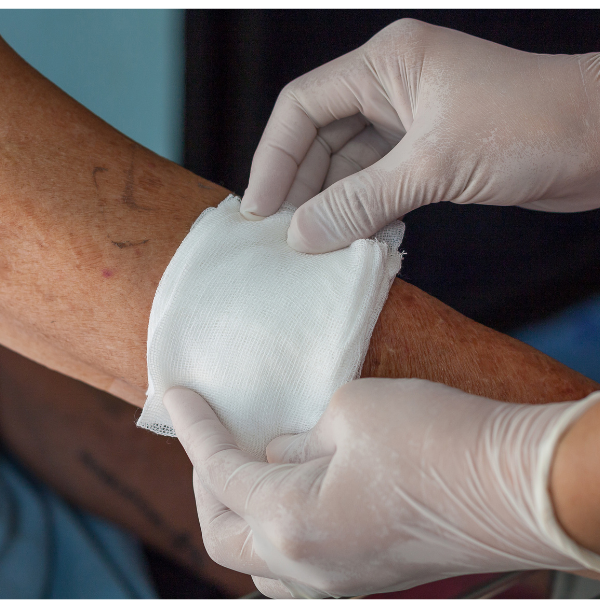Diabetes impacts the kidneys through diabetic nephropathy. This diabetes complication is quite serious and can affect people with type 1 diabetes and type 2 diabetes. It’s also more common than you’d think. About 1 in 3 Americans have diabetic nephropathy or diabetic kidney disease.
How does diabetes affect the kidneys?
Diabetes can start to reach the kidneys when blood vessels and cells there are damaged due to high blood glucose. It happens over time when diabetes is poorly managed.
Diabetes can damage the blood vessels that filter waste in the kidneys, leading to kidney failure. Additionally, this damage can lead to high blood pressure, which also damages the blood vessels. What can happen is a loop of damage that causes significant kidney issues.
Who’s at risk for diabetic nephropathy?
People with diabetes, both type 1 and type 2, are at risk for developing diabetic nephropathy. There are additional risk factors that make kidney problems more likely, including high blood sugar, high blood pressure, high cholesterol, obesity, smoking, and any family history of kidney disease.
What are the symptoms of diabetic nephropathy?
At the beginning, patients probably won’t notice anything. But as time goes on and the kidneys get worse, symptoms can become more obvious. It’s important for patients with diabetes to regularly visit their doctors and get tested to assess their kidney function. If patients with diabetes experience any of the following symptoms, they should definitely get checked right away. There are certain signs and symptoms of diabetes and kidney problems, including: trouble controlling blood pressure; swollen feet, ankles, hands, or eyes; frequent urination and/or protein in the urine; itching that lasts a long time; shortness of breath; loss of appetite; nausea and vomiting; fatigue; and confusion.
What can happen when the kidneys are affected by diabetes?
There are a number of concerning complications that result from diabetic nephropathy. Many patients may not be aware of all of them, but they’re pretty far-reaching and can affect the whole body. Complications of diabetic nephropathy include the following: pulmonary edema or fluid retention; cardiovascular disease and/or stroke; diabetic retinopathy or damage to the blood vessels in the eye; anemia or lowered red blood cell levels; hyperkalemia or increased potassium levels; widespread nerve and blood vessel damage, including diabetic foot ulcers, diarrhea, and other complications; bone disorders; and end-stage kidney disease.
How are diabetic foot ulcers related to kidney problems?
As mentioned in the section above, diabetic nephropathy can lead to more nerve damage, which can lead to foot complications like diabetic foot ulcers. But there’s more to this connection.
In peer-reviewed research, diabetic foot ulcers were associated with an increase in hospitalizations for renal failure. To be exact, when an individual has a diabetic foot ulcer, they’re twice as likely to be admitted to the hospital for problems related to the kidneys.
Because there is a link between diabetic foot ulcers and kidney problems, namely that they signal nerve damage, it’s important for patients to know that a sore on the foot could be indicative of more going on — and a signal of more that could happen.
How can diabetic nephropathy be prevented?
There are quite a few ways that patients can work on preventing kidney disease from diabetes, and they align nicely with suggestions for many other diabetic complications. The best ways to prevent diabetic nephropathy include keeping consistent doctors’ appointments; looping in specialists; taking medications as prescribed; managing comorbidities like high blood pressure, retinopathy, neuropathy, and foot problems; being mindful about over-the-counter or OTC pain relievers that may cause kidney damage; quitting smoking; and maintaining a healthy weight.
While diabetes can certainly affect the kidneys, it’s a win-win to focus on these areas of prevention. With proper intervention, diabetic nephropathy can be treated.
How is diabetic nephropathy treated?
To treat diabetic kidney disease, doctors will routinely screen for urinary albumin (or blood protein), the albumin/creatinine ratio (how much albumin there is compared to how much creatinine there is), and glomerular filtration rate or GFR (or creatinine levels). All of these tests can give doctors a clear picture of how the kidneys are functioning.
If necessary, sometimes further tests like imaging and biopsies are required. From there, doctors may prescribe medications. If things advance, kidney dialysis or kidney transplants may be discussed as a way to treat diabetic nephropathy. For many patients, kidney problems caused by diabetes can be treated successfully with low levels of intervention.
It can be overwhelming for patients who are struggling with diabetes complications, but it’s important to remember that even though diabetes can impact the whole body — there’s a lot of hope with future treatments, technologies, and prevention solutions for diabetes and diabetic complications.





